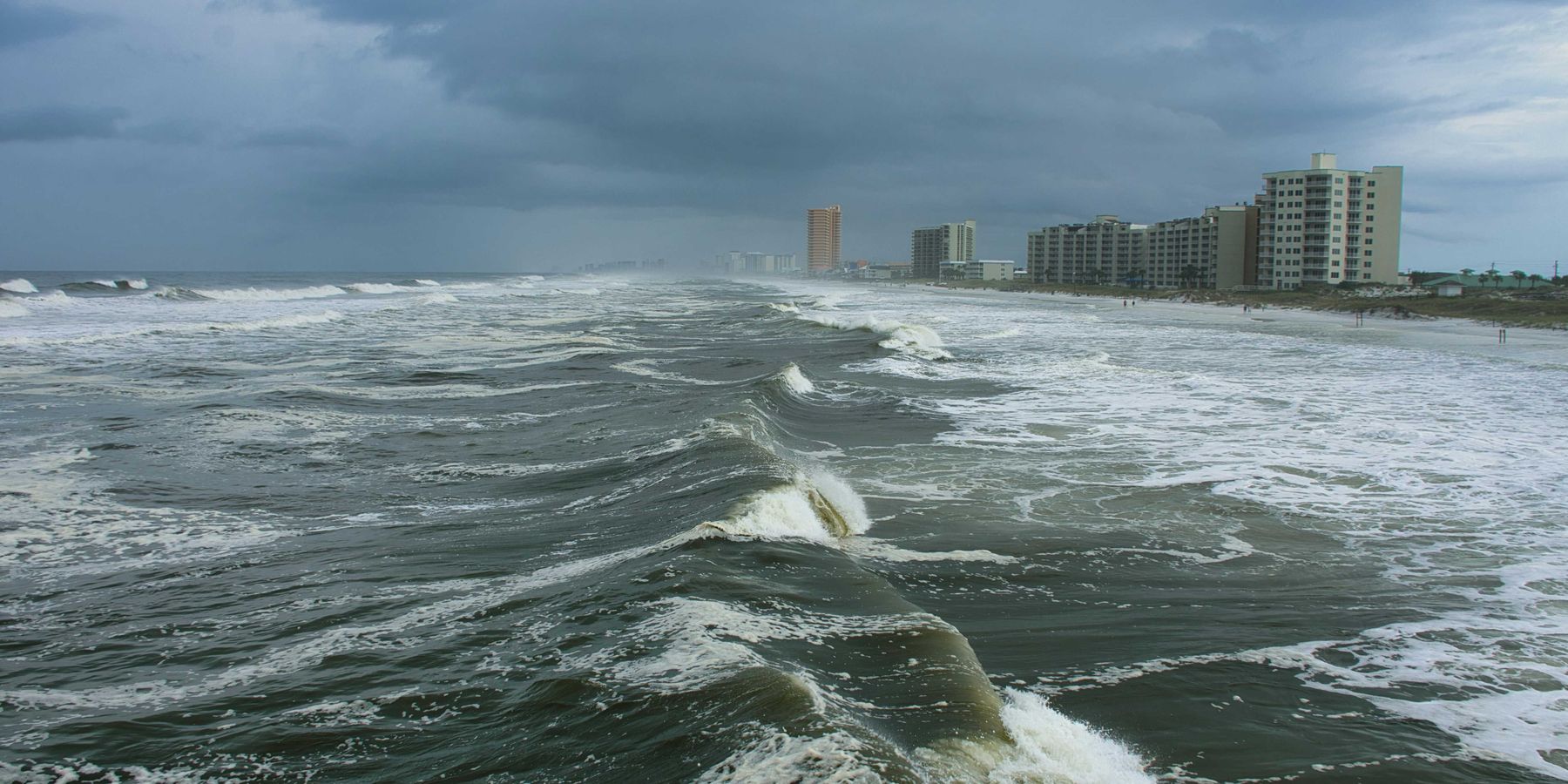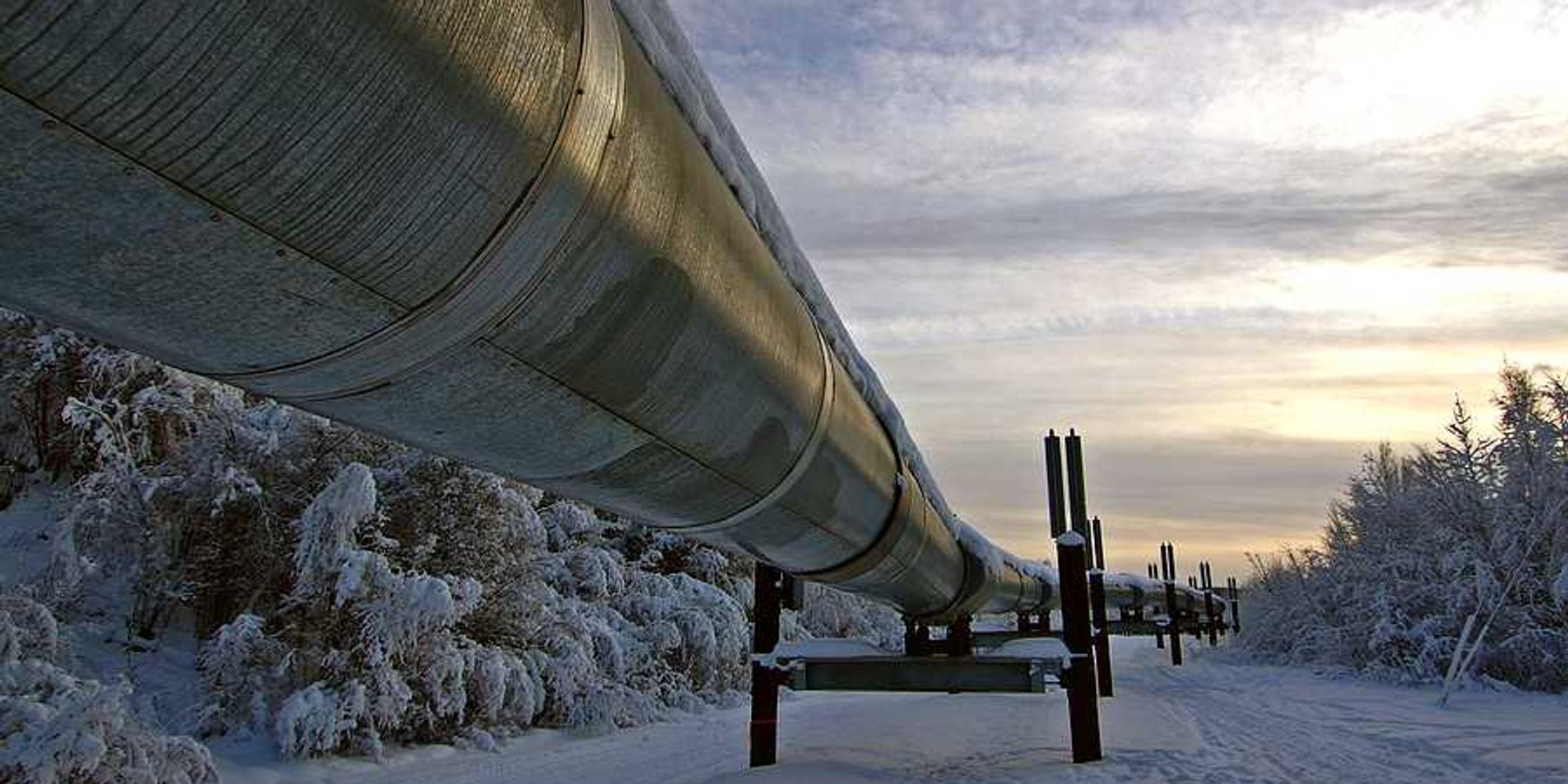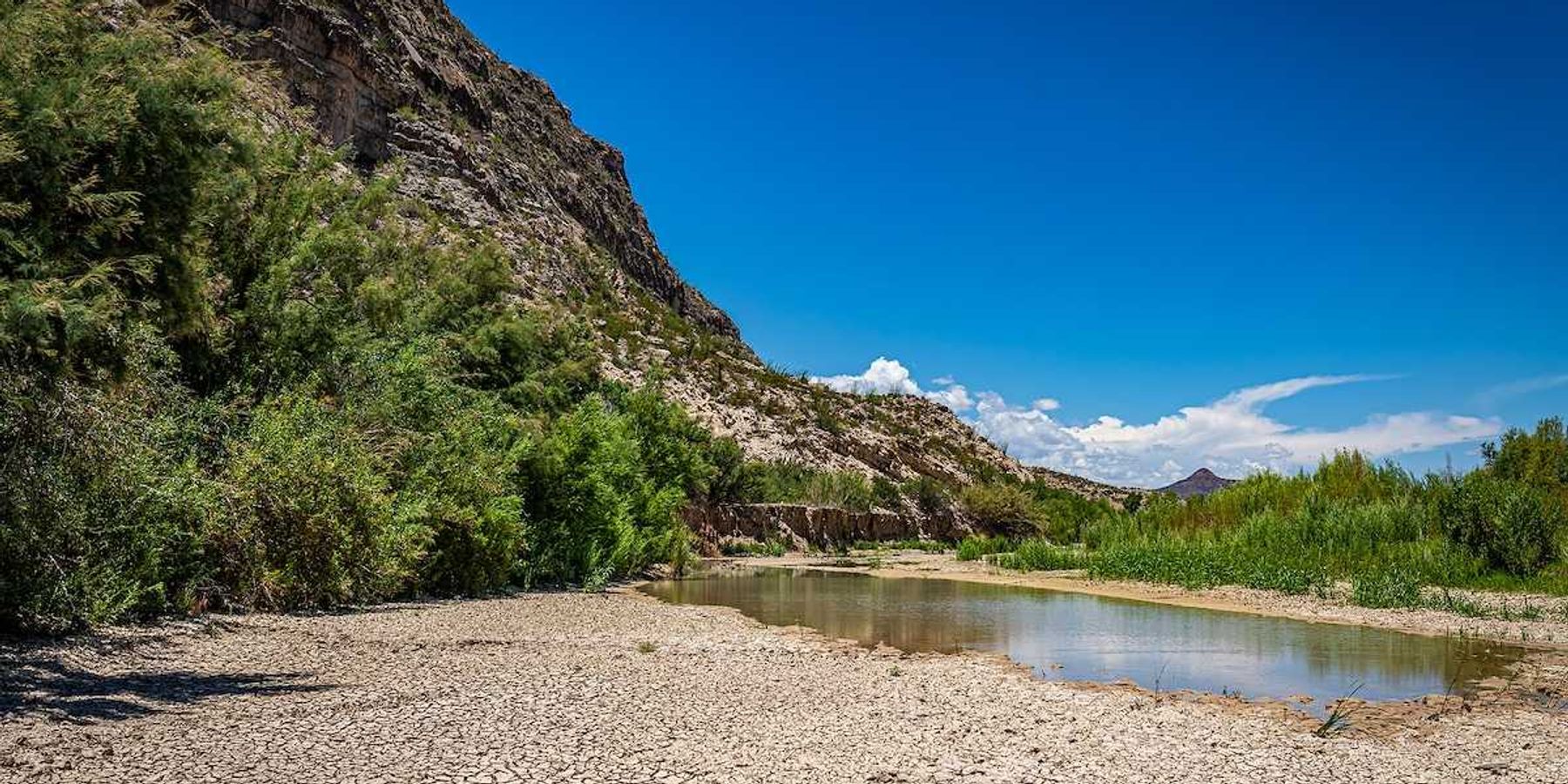
Appalachia is transitioning from coal. Here’s what it could learn from Germany.
Lessons from environmental and economic restoration efforts in the Ruhr Valley could help usher Appalachia into a new era.
ESSEN, GERMANY—Gregor Krantz went to work in the Ruhr Valley mines when he was 16. It was the 1960s, when becoming a miner in Germany's historic coal region was still considered "the job of the future," Krantz said.
Ruhr is a close-knit cluster of towns in western Germany where stretches of farmland are interrupted by densely populated industrial cities. At the height of coal in the 1950s, nearly 200 Ruhr mines employed 500,000 miners, producing as much as 127 million tons of hard coal annually.
High in energy density and carbon content, the lucrative black rock brought financial gains to Ruhr at the expense of the environment and the health of residents for 150 years—until global markets made it cheaper for Germany to import coal than produce it.
In 2018, Ruhr's last hard coal mine, Prosper-Haniel, closed. The era of coal came to an end. Now, Krantz works as a supervisor in the museum at the Zollverein Coal Mine Industrial Complex in the city of Essen, where he calls himself a "witness of time," telling visitors about the world perspective he developed as a miner, lamenting what was lost in the transition.
"You want to be alive at the end of the day. You didn't have time to worry about who looked or behaved differently than you," he told me during my visit to the museum in July.
Zollverein shuttered in 1986 after 135 operating years and sat unused for nearly two decades. A UNESCO World Heritage site, Zollverein is home to two museums, shops, restaurants, an ice rink, a public pool, and a start-up incubator. With striking Bauhaus architecture, the site draws major events, and, like the day I visited, couples looking for a dramatic wedding location.
Zollverein is also a place where coal's influence — for better and worse — is examined and honored, celebrating mining culture while addressing public health consequences and dangers for workers. Historian and archaeologist Brigitta Hübner said Zollverein serves as an example of the identity Ruhr Valley strives for today: a hub for arts, culture, innovation, and technology—all built because of coal.
Germany's transition away from coal is about more than reimagining a place. Significant environmental restoration throughout Ruhr was necessary to bolster economic efforts, and for those efforts to be meaningful, miners and their communities couldn't be left behind.

I traveled to the Ruhr Valley because my home, Birmingham, Alabama, has long been in a similar transition — reinventing itself in the wake of industrial economic collapse and dealing with legacy pollution from those industries. Birmingham is one of the southernmost cities in Appalachia, a region often compared to Ruhr: Both are historically reliant on coal and its related industries; both fueled the world's growth on the backs of their people.
How Ruhr is transitioning away from coal could offer lessons for Appalachia, as fossil fuel extraction and production become less viable for the environment and the economy, and as more mines, power plants, steel mills, and coking plants shut down.
As activists, lawmakers, and communities grapple with how to handle the economic, environmental, and social changes, many are asking how we ensure that transition is just: equitable, sustainable, and sensitive to history.
"Boon and burden"
Birmingham was founded in 1871 when prospectors discovered all three key ingredients for steel along a ridge they dubbed Red Mountain for its rust-colored dirt, rich with iron ore. My granny was raised in Logtown, part of which was renamed Irondale and is only a couple miles from where I'm raising my family.
Before the steel collapse of the 1970s, industry jobs kept Birmingham's economy afloat while destroying a once lush environment where biodiversity thrived. My mom remembers returning to her car after a day's work downtown and wiping clean the soot from her windshield.
Today, the constant gray haze over the city is gone, but residents are struggling with the ongoing effects of pollution like poor air quality and unsafe waterways, while rebounding from steel's collapse.
Revitalization that's reversed white flight and brought pockets of economic growth in Birmingham hasn't reached many of the city's working class neighborhoods, where disinvestment for decades after the Civil Rights Movement left once thriving black communities blighted, without adequate schools, public transit, or access to nutritious food.
There has been significant investment in honoring the industrial heritage in Birmingham, restoring mine sites to nature preserves and outdoor classrooms, and repurposing industrial spaces like Sloss Furnaces, a former blast furnace that is now a museum and event space.
But economic investments in tech start-ups, food tourism, and green spaces haven't fixed some of the public health and environmental hazards, which activists say continue because of lax regulation by state agencies and lawmakers. Regulatory agencies "are friendly with industry" instead of serving as environmental watchdogs, said Michael Hansen, executive director of Gasp, a nonprofit advocating for better air quality and environmental justice in the greater-Birmingham area.

In North Birmingham, a decade-long U.S. Environmental Protection Agency clean-up of toxic soil at a Superfund site has cost taxpayers $25 million and is still underway. Gasp helped reveal a scandal in which one of the companies, Drummond and Co., named potentially responsible for the pollution by the EPA, paid an elected official to disperse misinformation that bred mistrust of the EPA among residents.
The company and its law firm encouraged state politicians to oppose North Birmingham's placement on the National Priorities List, a designation that would release federal funds for an expedited clean-up, expanded testing, and resident relocation.
Despite convictions of those involved, the cleanup is still complicated, and residents are searching for answers about their health and their future. Recently, Birmingham city council passed a resolution to seek funding to relocate residents near the Superfund site since state leaders have not approved the federal designation.
Charlie Powell grew up in North Birmingham. Now the founding director of the People Against Neighborhood Industrial Contamination, he's long advocated for relocation of residents."This whole place needs to be an industrial zone," said Powell, who worked in industry for decades before retiring to real estate. "People shouldn't be living out here in this mess."
Like Powell, my family has benefited and suffered from industry here. Both my great-grandfather and grandfather had jobs in steel that afforded them middle-class lives. In 1952, my great grandfather fell from a steel beam to his death. Now, I'm raising a kid who's been hospitalized for breathing issues in one of America's worst cities for air quality.
Families across Appalachia have relied on coal for more than a century, leading to the extraction of wealth at the expense of health for laborers and nearby communities. Today, across Central Appalachia, rates of black lung disease are surging among younger miners, and communities that often lack access to healthcare suffer higher rates of chronic pulmonary disorders, cancers, and development delays in children. Those conditions will only be made worse as the climate changes: higher temperatures and more severe floods and droughts could worsen the region's economy, a recent report from West Virginia University showed.
The industrial gains of coal led to wealth that continues to fund universities, art centers, science and medical research in both Appalachia and Ruhr. But that wealth would not be possible without exploitative labor practices. In Germany, under Nazi rule, forced labor enslaved 12 million people, including inside the mines of Ruhr. In the U.S., enslaved blacks and poor whites built the industrial systems and economy; workers are still fighting for pay, unions, and equal treatment.
That's the legacy of industry in Appalachia and Ruhr: boon and burden.

The view of Essen's now shuttered coking plant. (Credit: Katherine Webb-Hehn)
A "different nature" of capitalism
Beginning in the 1950s, Germany knew coal mining wouldn't be financially sustainable. A report from 1946 details how coal production dropped when the second world war ended, forecasting the demise of mining. Stefan Goch, historian and professor at Ruhr University Bochum, said slowly closing mines for more than half a century meant there weren't widespread lay-offs, but "a gradual decommissioning of mines and shrinking of the workforce."
When a mine did close, employees were offered positions at other facilities or depending on their age, offered early retirement with a pension—a practice that continued under current chancellor, Angela Merkel.
Municipalities across Ruhr tried to rebrand as hubs for arts and science. When the European Union named Essen the "Capital of Culture" in 2010, it surprised Germans who called the efforts to shift from blue-collar to creative fields an "unlikely transition."
"A lot of critics say people around this area don't need a dancing theater or arts or some fancy start up company, but they need real jobs," said Hanna Lohmann, the press officer for the Zollverein Foundation in Essen.
Lohmann said Zollverein, the former mine turned public space, has created 1,336 jobs. Two dozen former miners, like Krantz, serve as tour guides or supervisors in the museums, and many residents from nearby working-class communities work in one of the 60 businesses and startup companies on site.
"You would find even five or 10 years ago, people would say, if you want a startup company or digitalization, you have to go to Berlin," Lohmann said. "Now, let us compete."
But "the American experience has been entirely different," said Ronald Eller, professor emeritus of history at the Appalachian Center at the University of Kentucky.

Dr. Nadine Gerner, part of a nonprofit team overseeing the Emscher River restoration, said the river is "near natural" after deindustrialization and proper sewage management. (Credit: Katherine Webb-Hehn)
The regions aren't perfectly matched comparisons. Appalachia spans 13 states covering more than 200,000 square miles and is home to a diverse population of 25 million people, especially in southern Appalachia where people of color account for more than a third of the population. Ruhr is only 1,700 square miles with a population of 5 million. After generations of immigrants arriving to work in the mines, Ruhr is one of the most multicultural regions in Germany.
The main discrepancy, Eller said, "is the different nature of their capitalism."
The U.S. had a similar opportunity for long-term planning to slowly move away from coal after the second world war, Eller said, which would have allowed for a transition that didn't overwhelm taxpayers in addressing environmental and economic needs. "The chance for revolutionary change was lost," Eller said, because "those who control the jobs, control the political system."
In Germany, coal companies were powerful, but did not hold as much control over the system. A consolidated government plan included political leaders and companies acknowledging coal would come to an end. In 1968, a coal conglomerate, Ruhrkohle AG (RAG), was formed to oversee the continued operations and slow decommissioning of mines. In 2007, Germany ended mining subsidies and the possibility of German coal being competitive with imports.
That's a stark difference from the politicians here who "are saying that 'the coal jobs are coming back,' making a transition seemingly unnecessary," said James Van Norstrand, Director of the Center for Energy and Sustainable Development and law professor at West Virginia University.
"Instead of taking responsibility for leading that necessary energy transition, political leaders doubled down on coal," Van Norstrand said. "The result is lost opportunities...for the future economy, where large employers want renewable energy to satisfy corporate sustainability goals and low-cost energy."

Windmills are a common sight in rural Ruhr. (Credit: Katherine Webb-Hehn)
The number of U.S. coal jobs has fallen 61 percent over the last three decades, according to federal data. Coal-producing states, and now President Trump's administration, have loosened environmental regulations and allowed companies to use legal loopholes to accommodate the struggling coal industry.
Van Norstrand said bankruptcy laws exasperate lax regulation, allowing the coal companies to "pay their executives millions of dollars in retention bonuses, while shedding the pension and healthcare obligations owed to miners and the environmental liabilities for 'cleaning up after themselves.'"
Miners who worked in the sixth largest mine in the U.S., at Blackjewel in Harlan County, Kentucky, only recently ended their strike after two months of protests demanding reimbursement for owed paychecks after the company filed bankruptcy. In Birmingham, one of the companies named "potentially responsible" by the EPA for polluting the Superfund site went bankrupt during investigations.
To offset shutdowns, the U.S. has offered job training programs for nearly 50 years in Appalachia, Eller said, but those programs "often fueled further outmigration rather than local economic development." Now, grassroots organizations and some lawmakers are working to restore mine land and grow new industries like solar energy, outdoor recreation, and agriculture. But to avoid economic depression in areas reliant on industry, the U.S. has to address structural changes, Eller said.
"Land ownership, taxation, political control, and the absence of any real democratic participation— those are structural challenges that we face in the larger American society as a whole," Eller said. Until those issues are addressed, efforts to boost Appalachia's economy will only serve as a "Band-Aid" for much bigger problems.
Prioritizing a pollution purge
Archaeologist and historian Dr. Brigitta Hübner grew up in soot-soaked Essen in the 1960s. Back then, she said pollution in Ruhr was so commonplace it was laughable to even suggest the sky might one day be blue.
"All the green here now, it's amazing," Hübner said.
The shift away from hard coal mining in Ruhr was economic, Hübner said. But as mines closed, the environmental reality hit: in order to attract new residents, tourists, and investors, and to carry out a socially just transition, meaningful environmental restoration needed to take place.
The Ruhr valley was flat until mining restructured the landscape to "little hills and valleys," Hübner said. The hills are a visual reminder of the rock that's been unearthed there, not unlike mountaintop removal mining operations in Appalachia. Underneath Ruhr today, Hübner said it's all "Swiss cheese," a series of tunnels and holes. The instability causes movement similar to earthquakes that can damage homes — but more troubling, Hübner said, is the accumulation of rainwater in abandoned mines. If that rainwater reaches the water table depths, it could contaminate drinking water. Taxpayers and the German government spend 220 million euros (equivalent to $241 million) each year to support removal of water from the mines.

Known as "Droppings Creek," the Emscher River in the early 20th century was heavily polluted by mining and wastewater.

The restored Emscher River is a site for recreation in 2019. (Credit: Katherine Webb-Hehn)
"It's called the 'eternal task,'" Hübner said. "The water will have to be pumped for eternity, which will cost every child." If there was a widespread electrical outage or if pump funding ceased, the region would flood.
Similar pollution and land development problems plague mountainous Appalachia, including Birmingham, which sits on karst topography, defined by soluble rock that creates underground sinkholes and caves.
Across the region, land unsteady from mining and fracking has played a role in landslides, floods, and sinkholes that have devastated communities. Wastewater treatment plants and other industrial facilities leak or spill into waterways, and some low-income, urban areas where industrial plants are sited have found toxic chemicals in their soils and water.
The largest environmental project in Ruhr began in 1990 when multiple municipalities dedicated 5.5 billion euros to a decades-long project to restore the region's Emscher River, polluted by untreated wastewater.
"Generations had passed where people didn't know the Emscher was even a river," said Dr. Nadine Gerner, a biologist who works with the nonprofit Emschergenossenschaft.
Local governments deemed the restoration a public health necessity and funded a modern, underground sewage system. Nonprofit partnerships ensured the ecological restoration would be completed with local communities in mind. Gerner said bike paths, outdoor classrooms, and parks are part of an effort to rebrand what was known by locals as "Droppings Creek."
One of the most ambitious pieces of the project involved demolishing a former steel mill and turning the site into a lake for luxury housing and recreation. People laughed at first, Gerner said, but today, Lake Phoenix is a site of major economic growth. Overall, from the Emscher restoration, there's been an estimated 4.6 billion euro impact on the region, with 3,700 new jobs created annually.

Historian and archaeologist Brigitta Hübner said the tranistion in Ruhr was political, economic but led to environmental restoration. (Credit: Katherine Webb-Hehn)
But Gerner said critics worry encroaching gentrification needs to be curbed in order for the small number of long-time residents, mostly working class families, to remain.
Central to environmental success, Emscher's restoration happened alongside significant reduction in ongoing pollution as the country adopted and worked toward ambitious clean energy goals. Germany is also accountable to the European Union, which monitors pollution levels and sues over exceeded limits.
But there's still pollution in the region: Prosper-Haniel, the last mine in Ruhr to shutter, was near the small town of Bottrop, a quaint town an hour north of the Emscher with cobbled streets and café-lined squares. Dorothee Ladner, who works in the mayor's sustainability office, said the town recently received environmental reports indicating local soil had higher-than-safe levels of toxics—likely from a nearby coking plant that continues to operate.
In Birmingham, activist Keisha Brown has lived across from one of the coking plants in Birmingham's Superfund site all of her 40 years and has suffered chronic asthma since she was a child. When her son was 14, she said the EPA told her not to let him play outside; not to eat, drink, or chew gum in the yard, and immediately wash any soil from his clothes.
"It's a noxious smell. There's no way bringing in a foot of soil is supposed to make us safe," she said, referring to the EPA remediation that's replacing toxic topsoil with fresh dirt.
In the 13 Appalachian states, there are 406 Superfund sites. While taxpayers fund the cleanup of these sites, the EPA under the Trump administration is weakening regulations for coal ash, chemicals, and air pollution, and working with industry to craft its policies. The 15 toxics found in Birmingham's soil included arsenic, lead, and polycyclic aromatic hydrocarbons like benzo(a)pyrene and are associated with cancer, skin lesions and developmental delays. Stories from Birmingham residents echo those in rural communities near mining operations, where multiple generations living with contaminated water have skin and respiratory problems and higher rates of diseases.
"It's one thing to take a job in a factory and risk your health for the paycheck. I did," said Birmingham activist Charlie Powell."It's another thing for the community suffer and not even know it."
Cleanup efforts in the U.S., without proper oversight, fail workers, too. More than 200 workers who cleaned up the nation's largest coal ash spill in Tennessee have fallen sick or died from exposure to toxics without proper protective gear. A decade later, their families are still trying to hold Tennessee Valley Authority accountable.

Emma Fuchs, 15, is a member of Fridays for Future, the youth-led climate activist group. (Credit: Katherine Webb-Hehn)
The 30 years dedicated to the Emscher restoration are coming to a close in a new era of environmentalism. Youth climate justice activists are rallying around the world and organizations like the Right to Clean Air are litigating diesel bans in Germany. Last year, thousands of German activists gathered successfully in the Hambach Forest to protest mining the 12,000-year-old ancient forest.
Young climate activists have pushed 2020 presidential candidates to center climate change in their platforms and launched lawsuits against the government over inaction against fossil fuel companies.
For these movements to start to make significant, lasting change, activists and experts say, there has to be political will to benefit people and the environment.
"I don't remember a moment when I thought, 'I have to save the environment.' This is our reality," said Emma Fuchs, a 15-year-old German activist with Fridays for Future, the youth climate activist group organizing school walk-outs. Fuchs said she's hopeful but realistic about the future.
"It will be a long time until we see the real change."
Research for this article was made possible with the support of the Heinrich Boell Foundation's Transatlantic Media Fellowships. This story was produced and published in collaboration with EHN, Southerly, and Scalawag.
Katherine Webb-Hehn is a multi-media journalist in Birmingham, Alabama. You can find her work at katherinewebbhehn.com or follow her @KAWebb_.













